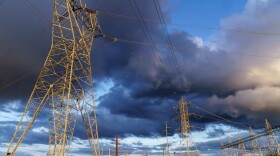-
California state officials are in Brazil for the annual United Nations climate conference. The visit highlights California’s role as a climate leader and supports its environmental policies, especially since the U.S. has no official federal delegation. However, some critics question whether the trip is worthwhile because California lacks the power to make international agreements.
-
Legal experts, including a former federal official and UCLA professor, say California could go it alone if the federal government stops regulating greenhouse gases. One reason to try is to protect the state’s clean-car economy.
-
A boom in data centers and the end of federal vehicle emissions standards means Oregon will fail to meet its 2035 greenhouse gas emissions reduction goal by two years, according to an analysis completed this month. But state officials pushing to drastically cut carbon emissions say it’s not too late to get back on track.
-
A massive heat wave is hitting the Pacific Ocean from Kamchatka to California.
-
Leaders in conservative and liberal states alike have long touted the benefits of a region-wide market. But some skeptics worry about merging the power systems of states with varying climate goals.
-
Gov. Tina Kotek’s executive order could fast-track renewable energy projects permits to meet July 4 deadline.
-
Oregon, California, Washington and 13 other Democratic states are losing nearly $8 billion toward climate projects, after the Trump administration terminated multiple federal grants.
-
California leaders wrapped this year’s legislative session Saturday afternoon, prolonged by last-minute backroom deals on climate and energy, sparking deep frustration among some lawmakers.
-
After weeks of tense and messy negotiations, California’s legislative leaders finally released several proposals that range from expanding domestic crude oil production to lowering electricity rates. But the biggest barrier was the reauthorization of the state’s cap and trade program.
-
Between April and July, Oregon experienced its fourth driest period since record keeping began in 1895, according to the state’s climatologist.
-
California lawmakers are rushing to extend the state’s landmark cap-and-trade climate program through 2045 amid opposition from unions and industry.
-
When lightning strikes are abundant, so are wildfires – some in remote places across the state. Scientists warn there may be more in the future.
-
Another heat wave is forecast to hit the region Friday afternoon and could last through Monday evening.
-
California has reached an agreement with the Federal Railroad Administration to protect $4 billion in federal funding for its high-speed rail project while a lawsuit over the money plays out in court. These funds are now held in a legal trust, ensuring they cannot be redirected until the lawsuit concludes.















